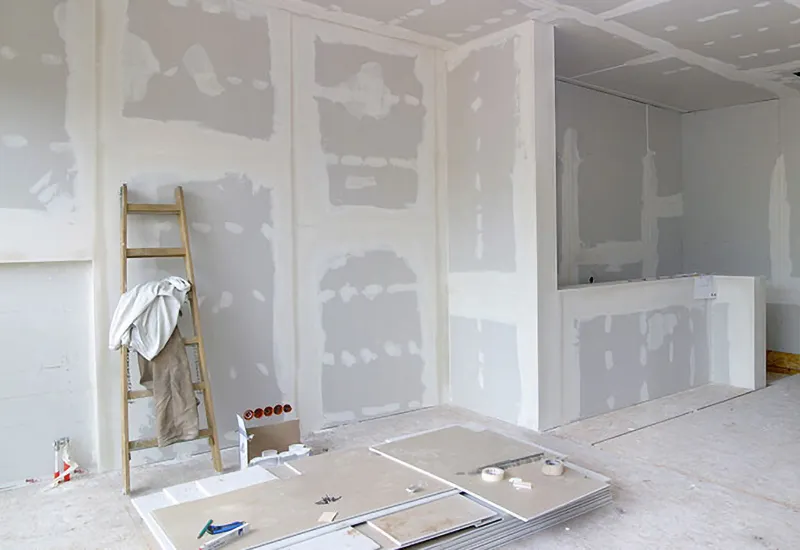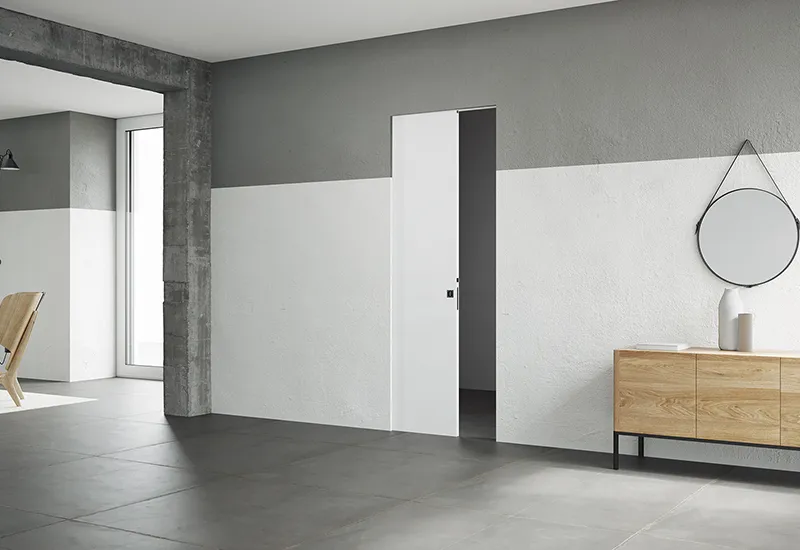Style & materials 05/30/2024
Plasterboard: versatility and applications in building projects

The origin of plasterboard
Plasterboard, also known as gypsum board, has become an essential element in the modern building world. Originating in the 19th century and invented by the American Augustine Sackett, plasterboard has evolved to become one of the most versatile and sought-after materials, especially for quick construction and efficient renovation. Its presence in DIY shops at competitive prices, coupled with its availability in various forms such as panels or sheets, makes it an affordable choice for many.
A plasterboard wall can be 8-10 cm thick and consists of two sheets and a cavity made of an insulating and/or sound-absorbing material.
A plasterboard wall can be 8-10 cm thick and consists of two sheets and a cavity made of an insulating and/or sound-absorbing material.
Different types of plasterboard
On the building scene, plasterboard comes in different variants, each suited to specific needs:
Standard Plasterboard
This variant is ideal for creating interior walls, ceilings and cladding. Its ease of installation and ability to stand the test of time make it a popular choice for many projects. In fact, despite being little known, plasterboard sheets are very durable.
Moisture-resistant plasterboard
This second type has the same structural characteristics as the first, plus it is particularly suitable for humid environments such as bathrooms and laundries, as it includes additional protection against humidity and temperature fluctuations.
Fire-protection and sound-insulation plasterboard
In addition, it is worth mentioning two other important types of this material, which are increasingly used in the building industry, especially by those with special needs and requirements in their homes or offices.
Fire-resistant plasterboard, for example, is used for areas exposed to heat sources, such as near fireplaces or kitchenettes, offering superior resistance to high temperatures.
Sound insulation plasterboard, on the other hand, is mainly used by those who would like to preserve a certain level of acoustic privacy by eliminating noise. This is possible by increasing the thickness of the boards used.
Fire-resistant plasterboard, for example, is used for areas exposed to heat sources, such as near fireplaces or kitchenettes, offering superior resistance to high temperatures.
Sound insulation plasterboard, on the other hand, is mainly used by those who would like to preserve a certain level of acoustic privacy by eliminating noise. This is possible by increasing the thickness of the boards used.
Characteristics and benefits of plasterboard
Plasterboard offers numerous advantages:
- Quick and easy installation: Its ease of installation makes it ideal for projects with tight deadlines.
- Versatility: Suitable for partition walls, false ceilings and decorative elements, it adapts to many applications.
- Durability and strength: Despite its simplicity, it offers good durability, ensuring a long-lasting investment.

Practical applications of plasterboard
Finally, the use of plasterboard ranges from new constructions to renovations, offering practical solutions for:
Counter walls and false ceilings: useful for concealing electrical installations or piping, improving the overall aesthetics.
Interior furnishing solutions: from shelves to wall bookcases, up to the installation of sliding and flush doors, such as those in Ermetika's Classic and Absolute lines.
Counter walls and false ceilings: useful for concealing electrical installations or piping, improving the overall aesthetics.
Interior furnishing solutions: from shelves to wall bookcases, up to the installation of sliding and flush doors, such as those in Ermetika's Classic and Absolute lines.

